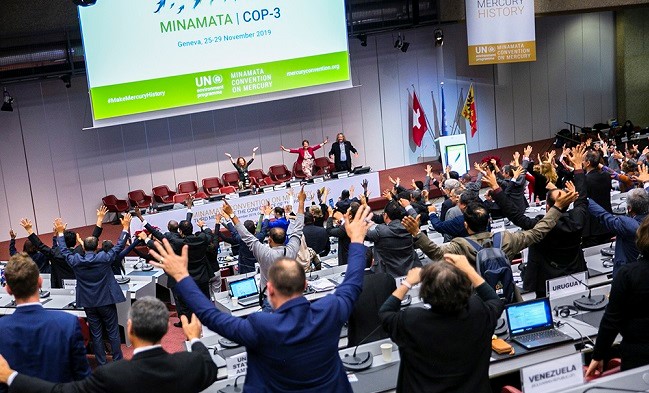The third meeting of the Conference of the Parties (COP3) to the Minamata Convention on Mercury that held from November 25 to 29, 2019 in Geneva, Switzerland focused on achieving the smooth functioning of an international treaty body as well as substantive and technical issues aimed at fostering action to address mercury production and use around the world.

Delegates were pleased with progress on some of the institutional agenda items, including the decisions taken on Secretariat services and the operationalisation of the Implementation and Compliance Committee. However, an early morning compromise at the end of the meeting that reduced the scope of the decision on the effectiveness evaluation, which had a direct bearing on the programme of work for the coming biennium, left many participants believing that COP3 had missed an important opportunity.
In addition to the decisions on the sharing of secretariat services between the Secretariat of the Minamata Convention and the Secretariat of the Basel, Rotterdam and Stockholm (BRS) Conventions and on the Implementation and Compliance Committee (ICC), discussions on operational issues resulted in decisions on:
- guidance for completing the national reporting format;
- the financial mechanism, including the Global Environment Facility (GEF) and the Specific International Programme (SIP), enhancement of the SIP, and review of the financial mechanism; and
- capacity building, technical assistance and technology transfer.
The COP reviewed cooperation with the World Health Organisation (WHO) and the International Labour Organisation (ILO). Most parties supported a proposed decision on collaboration with international organisations, but consensus was blocked on the grounds that it was a “political statement” that called for collaboration outside the scope of the Minamata Convention.
The COP also addressed technical issues that resulted in decisions on: releases of mercury; customs codes; mercury waste, in particular consideration of relevant thresholds; dental amalgam; the review of the Convention’s Annexes A (mercury-added processes) and B (processes using mercury or mercury compounds), which is due by 2022; and, guidance on the management of contaminated sites.
In addition, the COP discussed issues relating to emissions of mercury resulting from the open burning of waste.
At the close of the week-long meeting, which brought together over 1,000 participants in Geneva, Switzerland, delegates spilled onto the empty street in the early morning hours of Saturday, November 30, with numerous questions about how the next two years would play out.
Several decisions set the stage for further and deeper engagement of the Convention in driving national, regional, and international efforts to address a highly toxic heavy metal that is one of the top 10 chemicals that can harm human health. At the same time, a centerpiece decision on the effectiveness evaluation was reduced in scope, resulting in a reduction in the programme of work and budget.
In addition, a decision on international cooperation on the eve of an important year for policy-making on related issues, including chemicals management beyond 2020 and the post-2020 global biodiversity framework, did not advance.
Nonetheless, some expected that the new leadership of both the institutional home of the Convention – the UN Environment Programme (UNEP) – and the Convention itself, combined with the demonstrated dedication to the Convention’s objectives, will position the Convention so it can make progress during the next two years.
